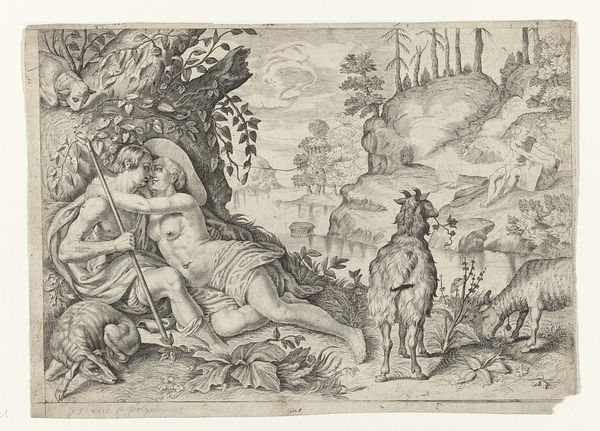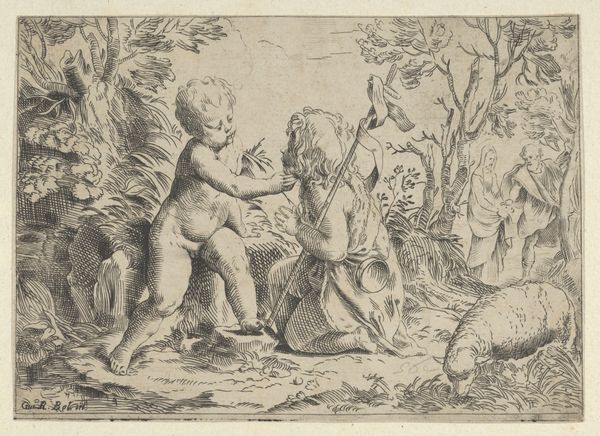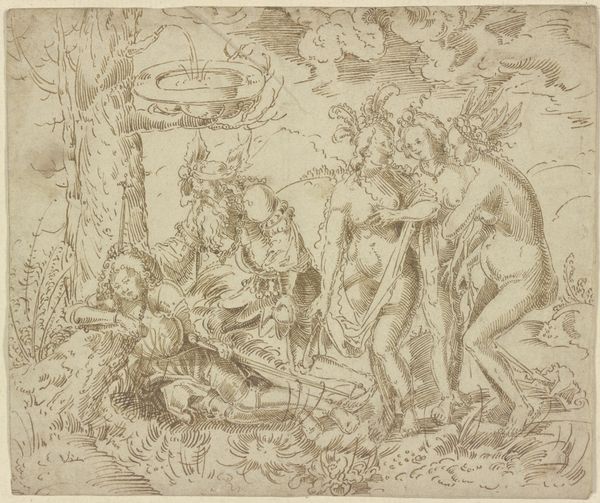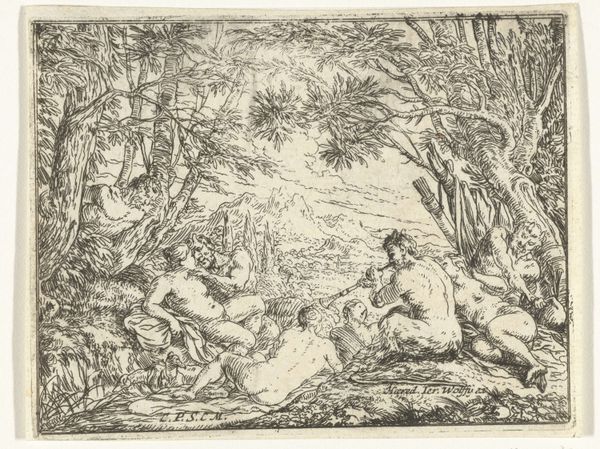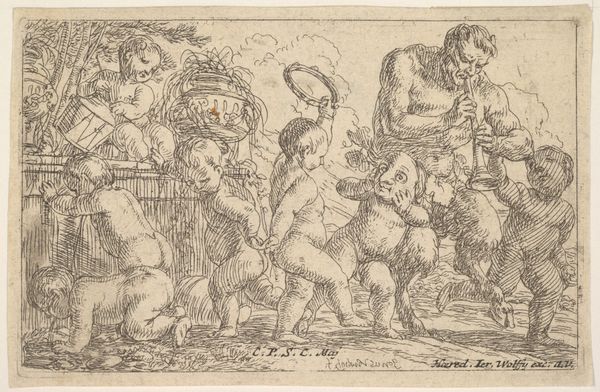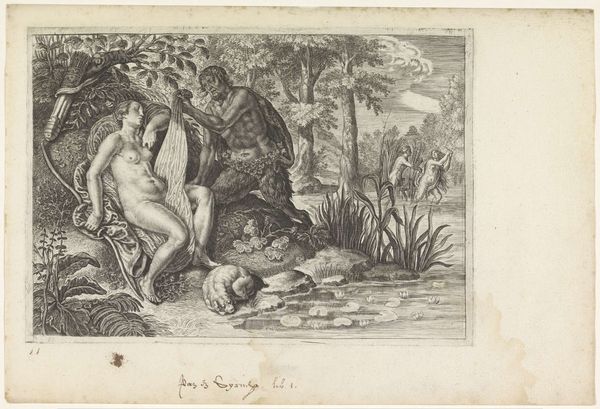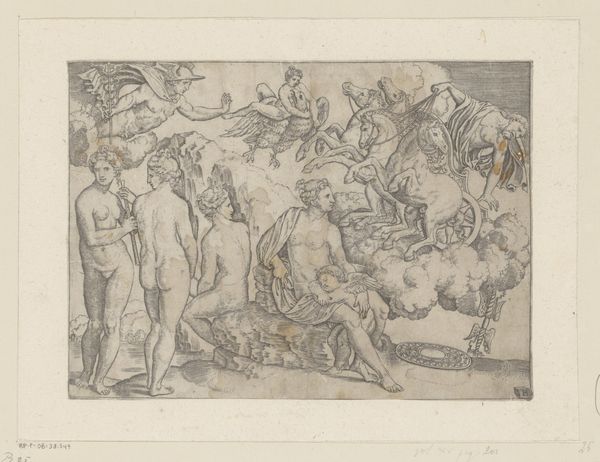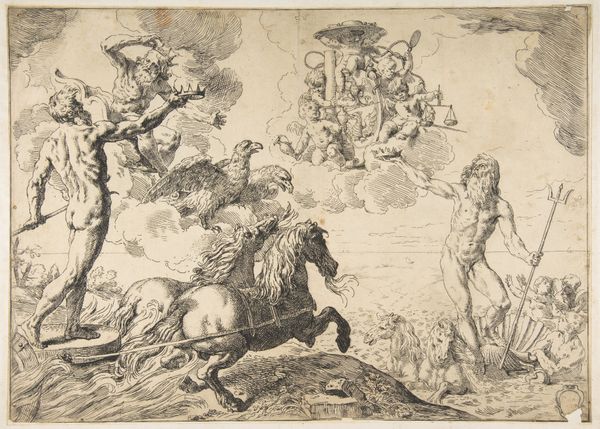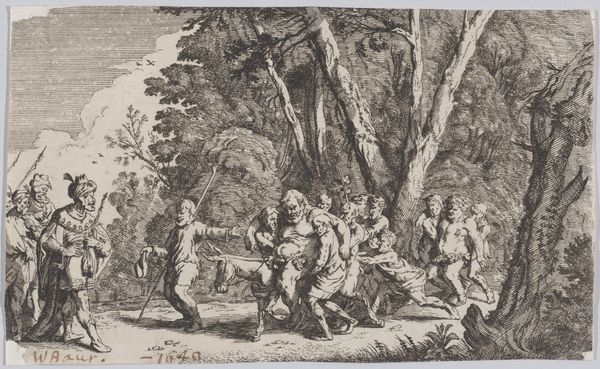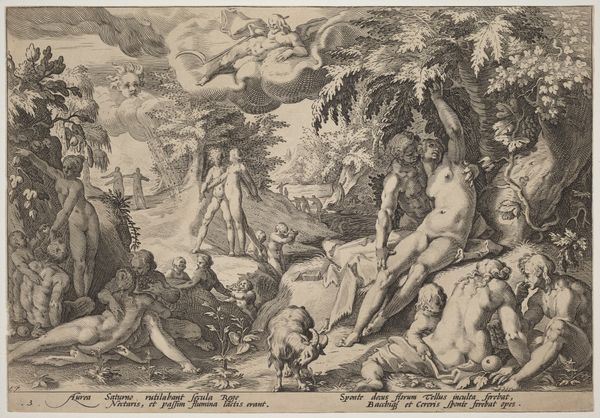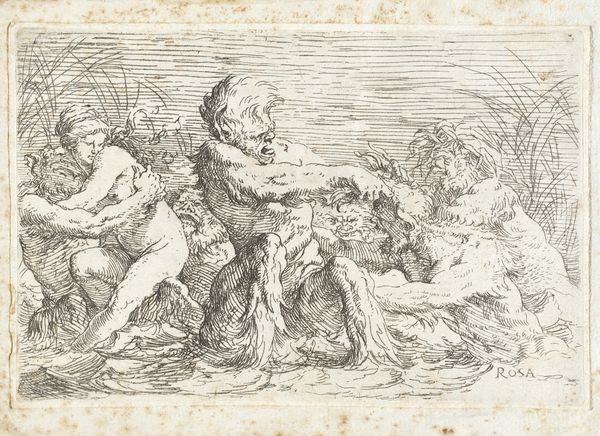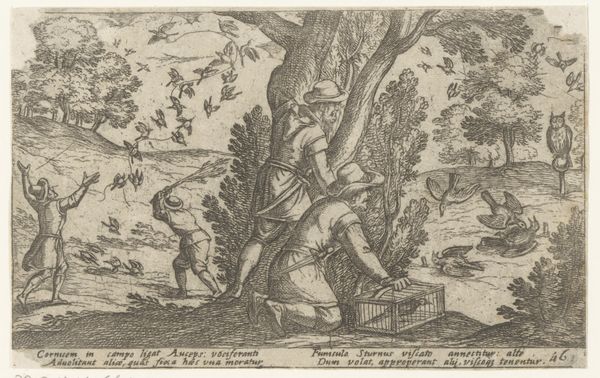
etching
#
baroque
#
etching
#
landscape
#
figuration
#
genre-painting
Dimensions: height 75 mm, width 92 mm
Copyright: Rijks Museum: Open Domain
Editor: This etching, "Musicerende saters en dansende kinderen," dating from 1634-1693 and attributed to Jonas Umbach, captures a scene teeming with mythical figures and children. I’m struck by the contrast between the static satyr and the dynamic cluster of cherubic children, all rendered in such precise detail. What visual relationships do you observe here? Curator: A formal reading of this etching reveals several intriguing aspects. Note the deliberate use of line to create both form and texture. The artist uses dense hatching to define the satyr's muscular body, contrasting with the smoother, more rounded forms of the children. Do you see how this difference in line weight influences your perception of space? Editor: Yes, the satyr seems more grounded, almost weighty, while the children appear lighter and more free-flowing. Curator: Precisely. And observe how the composition is structured around opposing diagonals – the satyr's gaze meeting the upward movement of the dancing children. This creates a sense of visual tension, a push and pull between stillness and motion. One might consider this dynamism in relation to the artwork's medium. What do you think this Baroque piece achieves? Editor: The controlled precision of etching somehow adds to that tension between static form and dynamic movement. I hadn't considered how much the technique reinforces the theme. Curator: Exactly. Formal analysis allows us to decode how visual elements contribute to the overall meaning and impact of the work. This is just one avenue into unlocking the art object. Editor: This has offered a richer understanding and a renewed appreciation of this print! It also highlights how a deeper understanding of composition and style help to decode meaning.
Comments
No comments
Be the first to comment and join the conversation on the ultimate creative platform.
